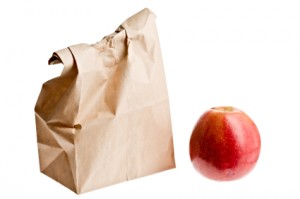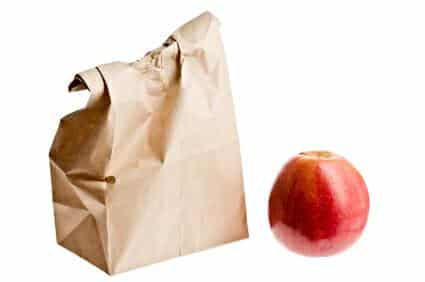RAEFORD, North Carolina — A preschooler at West Hoke Elementary School was charged $1.25 for three chicken nuggets for lunch January 30 because the school’s state agent told her the lunch her mother packed did not meet USDA guidelines.
 According to the person who inspected her lunch box, the girl’s turkey and cheese sandwich, banana, potato chips, and apple juice did not meet U.S. Department of Agriculture guidelines.
According to the person who inspected her lunch box, the girl’s turkey and cheese sandwich, banana, potato chips, and apple juice did not meet U.S. Department of Agriculture guidelines.
The Division of Child Development and Early Education at the Department of Health and Human Services now requires all lunches served in pre-kindergarten programs – including in-home day care centers – to meet USDA guidelines.
Those guidelines dictate that lunches must consist of one serving of meat, one serving of milk, one serving of grain, and two servings of fruit or vegetables. The DHHS guidelines also require child care providers supplement any home-packed lunches that do not include all the requisite items.
Carolina Journal could not obtain the name of the “state agent” who was inspecting all lunches brought from home that day. In an email to the Journal, department spokeswoman Lori Walston said: “As mentioned in the statement from the Department of Health and Human Services (DHHS) issued last night, this agency is currently working to determine the specifics of this case.”
The girl’s mother has requested she remain anonymous in order to shield her daughter from retaliation. She said she received a note from the school stating that students who did not bring a “healthy lunch” would be offered the missing portions, which could result in a fee from the cafeteria.
The mother wrote a complaint to her state representative, Republican G.L. Pridgen of Robeson County. In her complaint she said, “I don’t feel that I should pay for a cafeteria lunch when I provide lunch for her from home.”
Speaking to the Carolina Journal she said, “What got me so mad is, number one, don’t tell my kid I’m not packing her lunch box properly. I pack her lunchbox according to what she eats. It always consists of a fruit. It never consists of a vegetable. She eats vegetables at home because I have to watch her because she doesn’t really care for vegetables.”
“She came home with her whole sandwich I had packed, because she chose to eat the nuggets on the lunch tray, because they put it in front of her,” her mother said. “You’re telling a 4-year-old. ‘oh. your lunch isn’t right,’ and she’s thinking there’s something wrong with her food.”
Both the girl’s mother and grandmother assumed the potato chips and lack of vegetable were what disqualified the lunch but a Division of Child Development spokeswoman said that should not have been a problem.
“With a turkey sandwich, that covers your protein, your grain, and if it had cheese on it, that’s the dairy,” said Jani Kozlowski, the fiscal and statutory policy manager for the division. “It sounds like the lunch itself would’ve met all of the standard.”
It is unclear whether the school was allowed to charge for the cafeteria lunches they gave to every preschooler in the class that day.
The state regulation reads:
“Sites must provide breakfast and/or snacks and lunch meeting USDA requirements during the regular school day. The partial/full cost of meals may be charged when families do not qualify for free/reduced price meals.”
“When children bring their own food for meals and snacks to the center, if the food does not meet the specified nutritional requirements, the center must provide additional food necessary to meet those requirements.”
The school principal, Jackie Samuels, said he didn’t “know anything about” parents being charged for the meals that day. “I know they eat in the cafeteria. Whether they pay or not, they eat in the cafeteria.”
This action by the school reflects a growing trend by government officials to force healthier choices on people. Presidents Obama’s Executive Order 13544 in conjunction with Obamacare helped create the National Prevention, Health Promotion, and Public Health Council which was tasked with providing recommendations to Congress on how to achieve health promotion and public health goals, including the reduction of tobacco use, sedentary behavior, and poor nutrition.
So while our nation sinks further in debt and families struggle to handle rising costs, the government has tasked someone to send a four year old’s lunch home. And, in typical fashion, no one seems to know exactly why.










